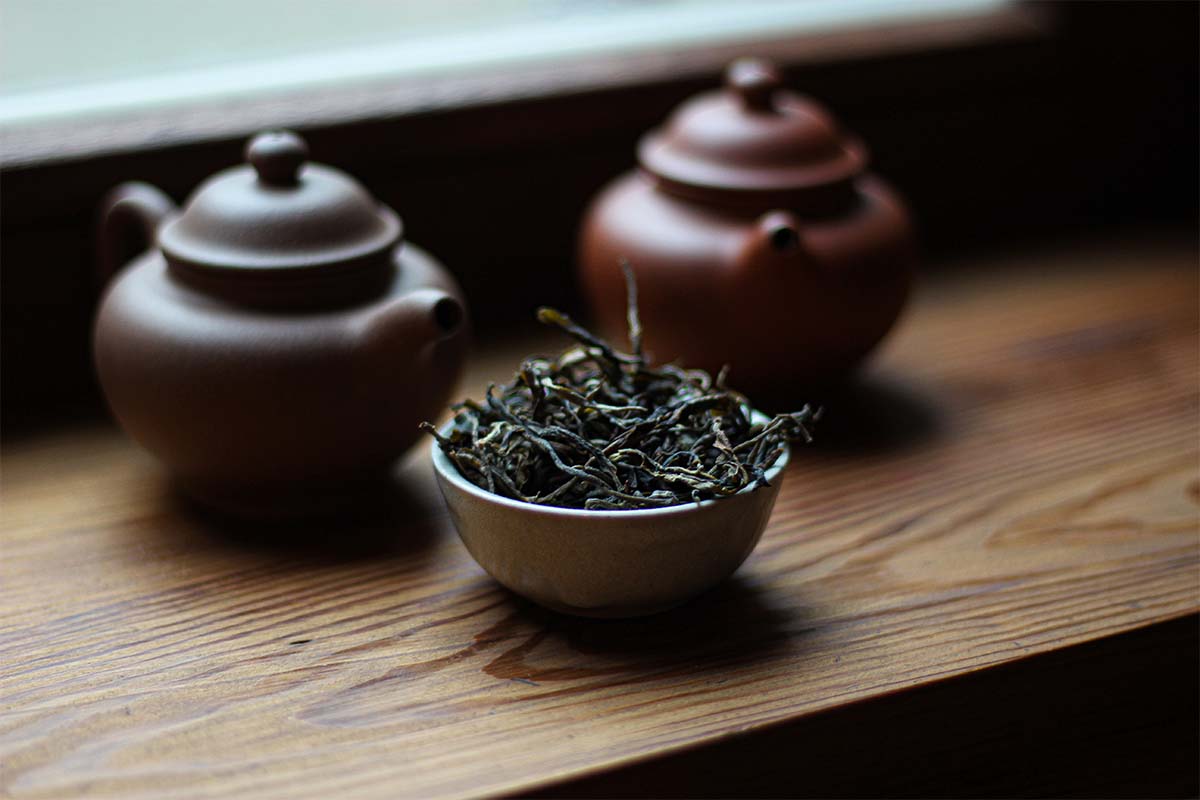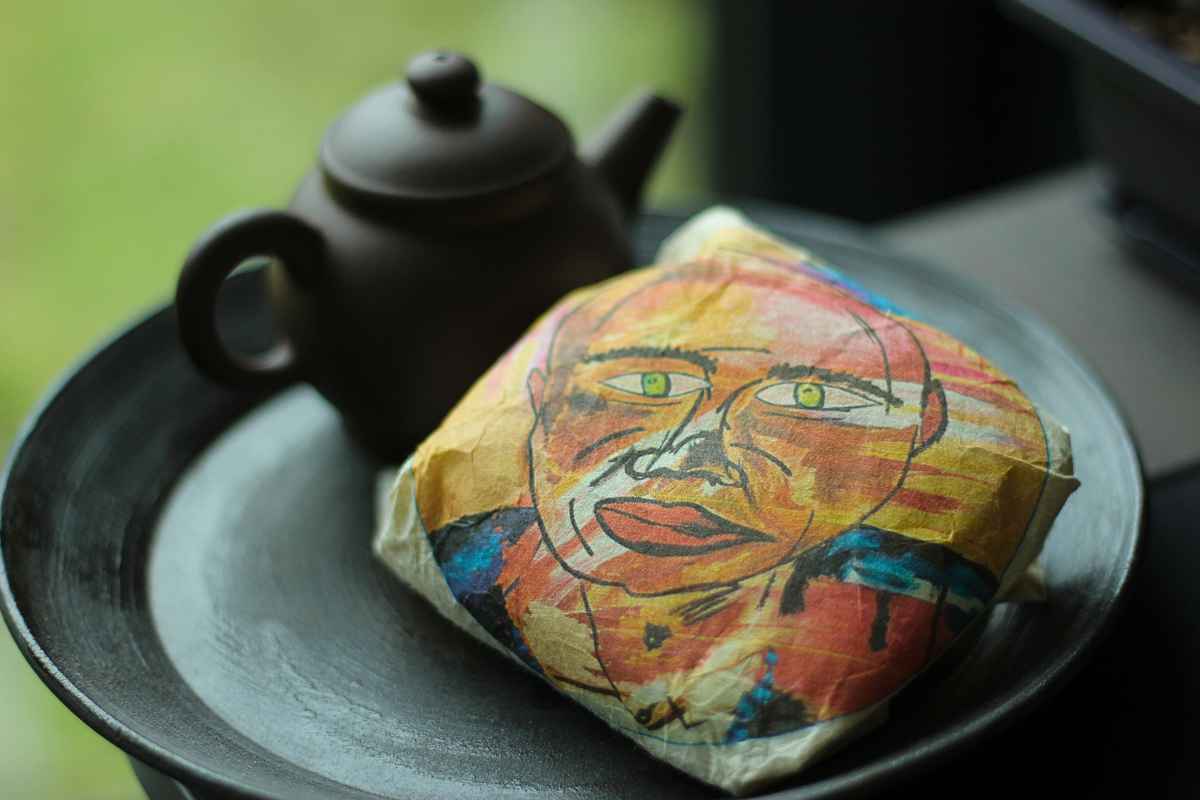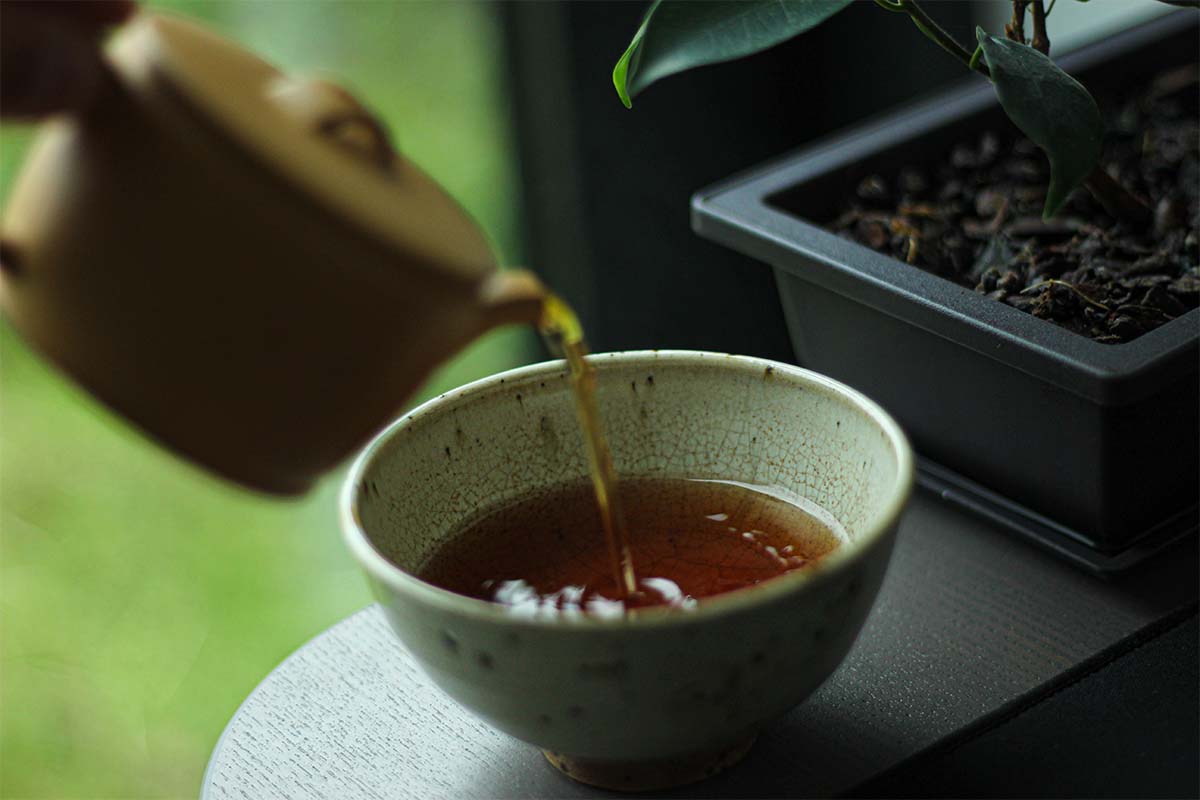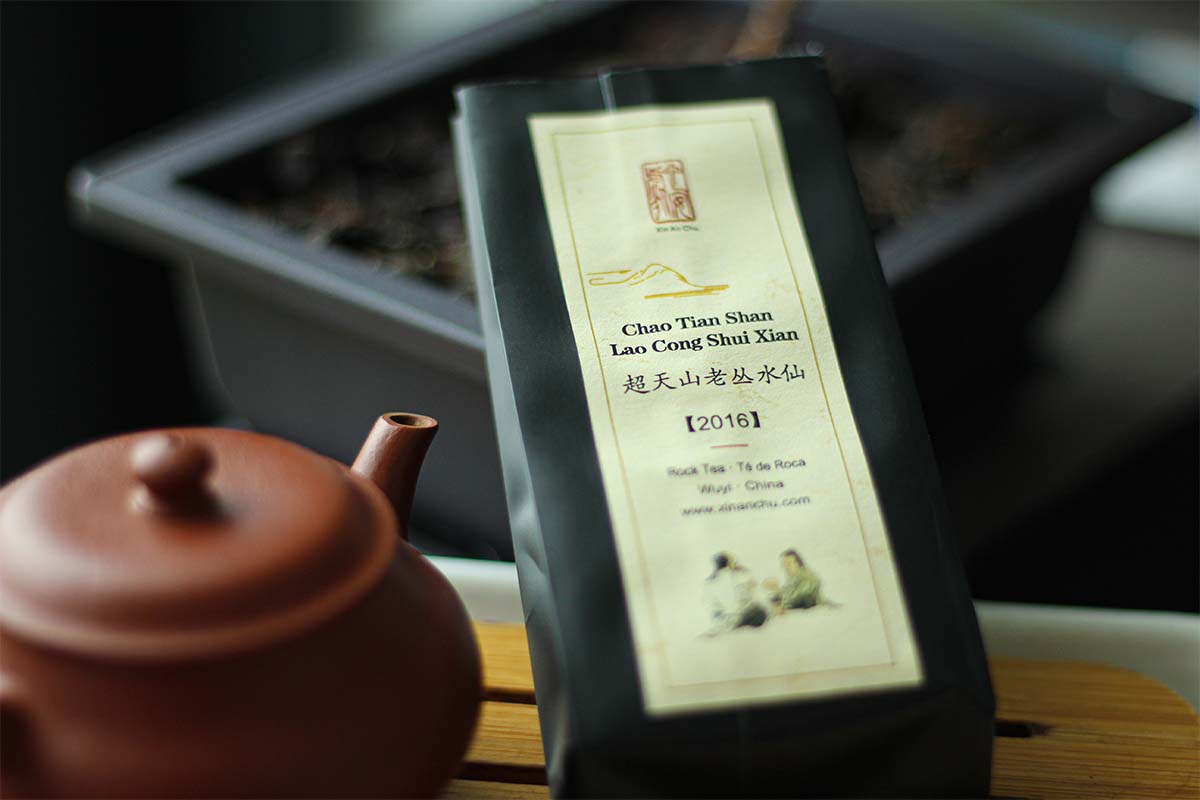Pu-erh tea is one of the most famous types of tea for good reason. It tastes good, it has a long history and it ages like fine wine. Many people like it, but it can be scary to get into if you don’t know what you’re doing. This article offers a full overview of how to brew pu-erh tea.
You brew pu-erh tea by heating water to 90°-100°C, weighing between 4-7g of tea, putting the leaves in a brewing vessel (gaiwan or teapot), infusing the tea leaves, and separating the water from the leaves once the infusion is done.
Teaware to brew pu-erh tea
Before we start, it’s important to discuss the different tools you’ll need to brew the perfect cup of pu-erh tea.
Teapot or gaiwan
The first thing you need to brew pu-erh tea is a brewing vessel. Usually, this will be either a teapot or a gaiwan. Smaller teapots and gaiwans of around 100-150ml are preferred to brew pu-erh tea because you have more control over the brewing process. You can also do multiple infusions and experience how the tea develops.
Everyone knows what a teapot is, but a gaiwan is something that not many people know. It’s a kind of cup/bowl with a lid. The word gaiwan literally means ‘lidded bowl’. If you’re new to pu-erh tea, I suggest using a porcelain gaiwan because this offers a more neutral taste.

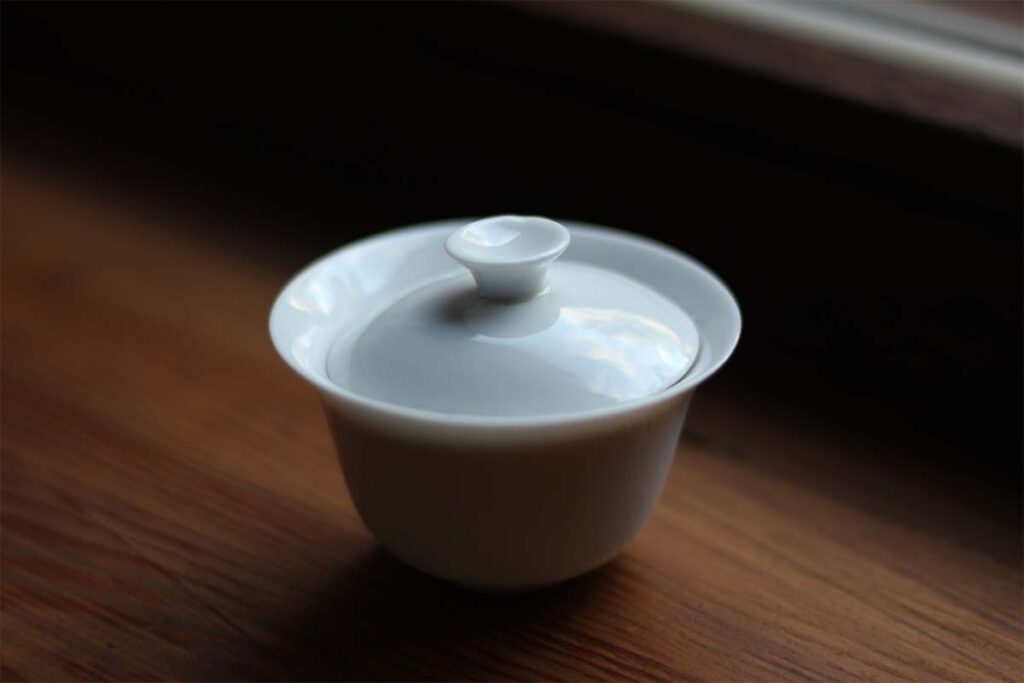
If you have some experience, a teapot is the better option because it can improve the overall experience. You can use different kinds of teapots, but most people prefer an Yixing teapot. This is a teapot is made from a type of clay from a town called Yixing in China’s Jiangsu province.
Pitcher or Gong Dao Bei
A pitcher, gong dao bei, or fairness cup is a tool that is frequently used in a Chinese tea ceremony. The goal of a pitcher is to make sure your tea is exactly how you like it.
Usually, a teapot or gaiwan will be bigger than the cup you’re using. If you pour yourself a cup, drink it and pour yourself another cup from the same teapot, the tea will be too strong because you’ve left it in the teapot for too long.
Even if you have enough cups, there will be differences in flavor between the different cups. You use a pitcher to prevent this from happening because you pour the tea from the teapot into the pitcher and your tea doesn’t get over-brewed.

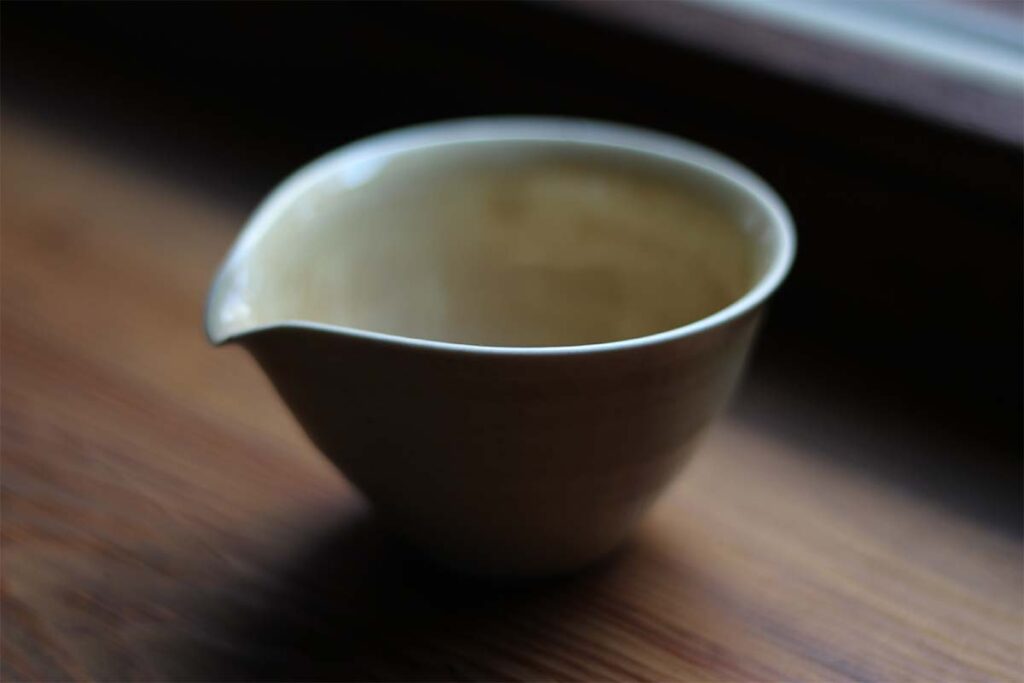

Using a pitcher (or fairness cup) will also make sure all guests at a tea ceremony will get a similar cup of tea. This makes it fair and everyone gets a fair share of tea, hence the name ‘fairness cup’. As you can see in the pictures, there is a wide variety of shapes, sizes, and materials.
Teacups
In a Chinese tea ceremony, small teacups are used for various reasons. Most cups are around 50ml (or even smaller) to make sure you can fully focus on the flavors you’re getting. If you only drink a small amount of tea, you’re more likely to zoom in and focus on what you’re drinking.
Smaller cups are also convenient because you can serve more people with the same amount of tea and the liquor cools down faster. As you can see below, there is a wide variety of shapes and materials for teacups as well.
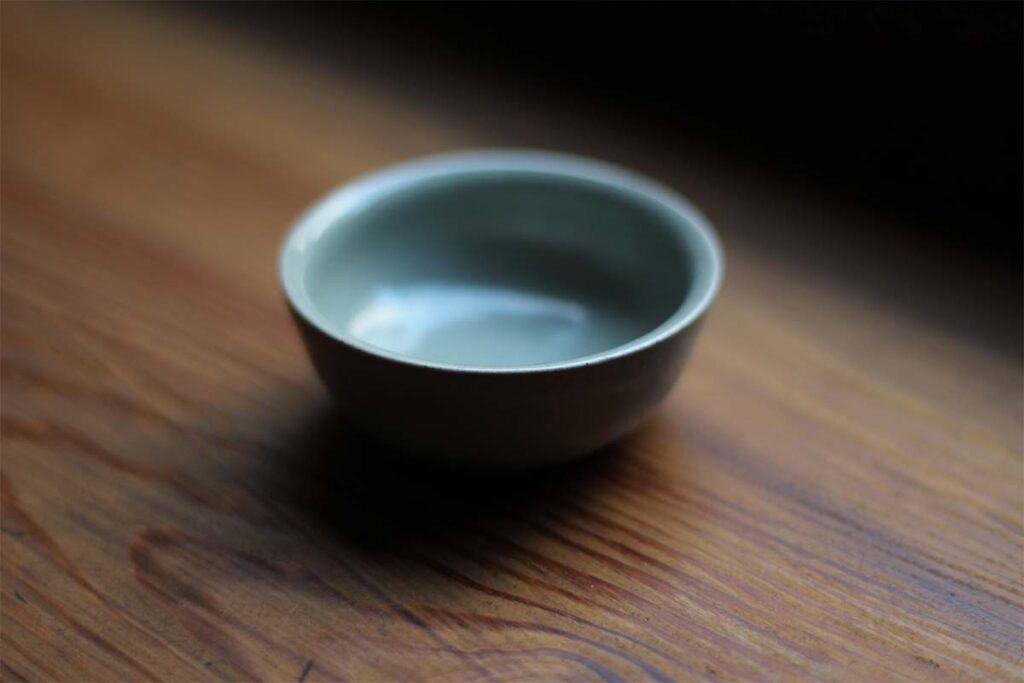


Beginner tips to brew pu-erh tea
Water temperature for pu-erh tea
The water temperature to brew pu-erh tea is not an easy topic to cover because it depends on personal preference. However, there are some general guidelines to get you started.
In general, young sheng pu-erh (less than 3 years old) is more enjoyable when you use slightly cooler water, so around 90°C or 194°F. This will brew less bitter and smoother tea.
Aged sheng usually needs hot water to get the most out of the dark and (partially) fermented leaves. Start with 99°C or 210°F water and see how you like it.
Shou pu-erh usually needs hot water to open the dark and heavily fermented tea leaves. Both young and aged shou pu-erh should be brewed using 99°C or 210°F water.
Amount of pu-erh tea
This comes down to personal preference, but a good starting point is to use around 5g of tea for a 100ml teapot or gaiwan. If you think the tea is too strong, use 4g next time. If it’s not strong enough, you should try 6g next tea session. The main tip here is to experiment and see what you like.
Rinsing pu-erh tea
Rinsing means pouring hot water over the leaves for the first time and then pouring away the water. This is done to wake up the leaves and open them up for brewing and to remove any dust from the tea leaves. Especially aged pu-erh can be dusty so it’s better to always rinse it before drinking.
It depends on the type of pu-erh tea and the compression of the tea cake, but pu-erh tea is always rinsed once. Sometimes, people even rinse their pu-erh tea twice. If a tea cake is compressed tightly, it might need two rinses to fully open the leaves to get them ready for brewing.
Brewing pu-erh tea
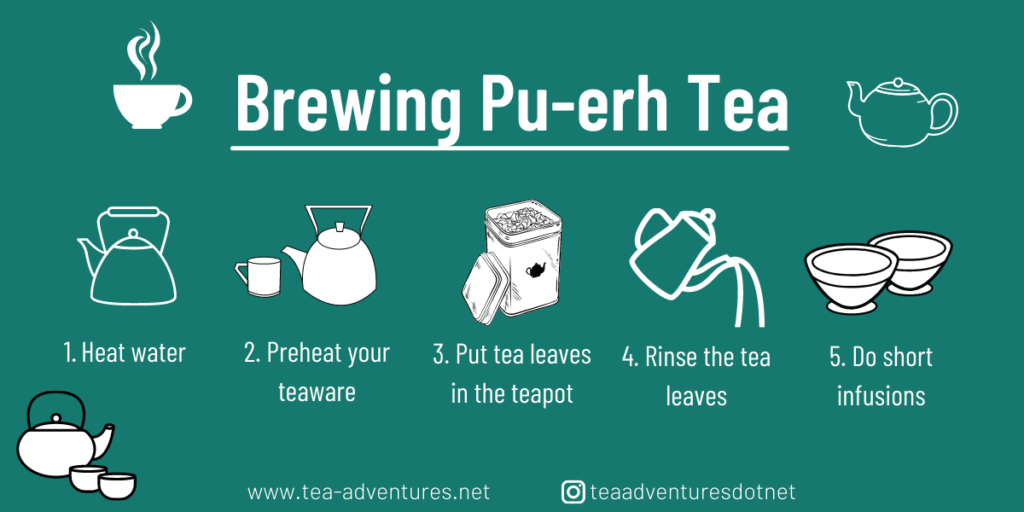
Brewing young sheng pu-erh
These are some simple steps you need to follow if you want to brew young sheng pu-erh.
- Heat water to 90°C or 194°C.
- Preheat your teapot/gaiwan, pitcher and teacup by pouring hot water in them and emptying them.
- Put around 5g of tea leaves in a 100ml teapot/gaiwan.
- Rinse the leaves by pouring water over them. Wait a few seconds and discard the water.
- Now brew the tea by pouring water in the teapot/gaiwan. You should brew the tea Gong Fu Cha, which means that you’ll have to do multiple short infusions.
- The first infusion should be around 10 sec, the second infusion 12 sec, the third infusion 15 sec, the fourth infusion 17 sec, the fifth infusion 20 sec, …
- Experiment with the length of the infusions because every tea is different and some people like strong tea, while others like it less intense.
Brewing aged sheng pu-erh
Brewing aged sheng pu-erh is similar to brewing young sheng, except for the water temperature and infusion length.
- Heat water to 99°C or 210°C.
- Preheat your teapot/gaiwan, pitcher and teacup by pouring hot water in them and emptying them.
- Put around 5g of tea leaves in a 100ml teapot/gaiwan.
- Rinse the leaves by pouring water over them. Wait a few seconds and discard the water.
- Now brew the tea by pouring water in the teapot/gaiwan. You should brew the tea Gong Fu Cha, which means that you’ll have to do multiple short infusions.
- The first infusion should be around 15 sec, the second infusion 20 sec, the third infusion 25 sec, the fourth infusion 30 sec, the fifth infusion 40 sec, …
- Experiment with the length of the infusions because every tea is different and some people like strong tea, while others like it less intense.
Brewing shou pu-erh
Brewing shou pu-erh is almost identical to brewing aged sheng. There are some differences, but the following instructions will get you very far.
- Heat water to 99°C or 210°C (the hotter the better).
- Preheat your teapot/gaiwan, pitcher and teacup by pouring hot water in them and emptying them.
- Put around 5g of tea leaves in a 100ml teapot/gaiwan.
- Rinse the leaves by pouring water over them. Wait a few seconds and discard the water.
- Now brew the tea by pouring water in the teapot/gaiwan. You should brew the tea Gong Fu Cha, which means that you’ll have to do multiple short infusions.
- The first infusion should be around 20 sec, the second infusion 25 sec, the third infusion 30 sec, the fourth infusion 35 sec, the fifth infusion 40 sec, …
- Experiment with the length of the infusions because every tea is different and some people like strong tea, while others like it less intense.

